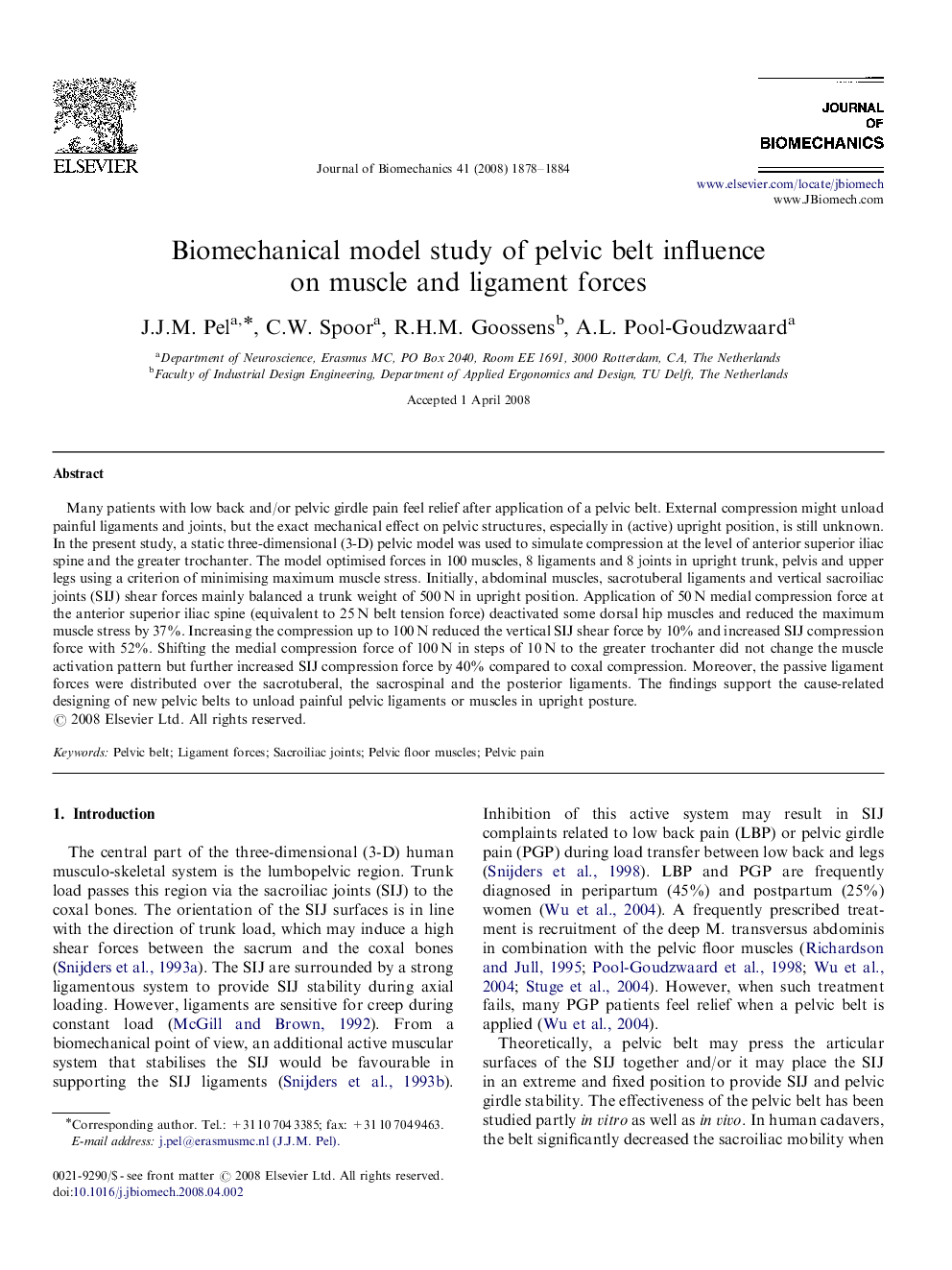| Article ID | Journal | Published Year | Pages | File Type |
|---|---|---|---|---|
| 875159 | Journal of Biomechanics | 2008 | 7 Pages |
Many patients with low back and/or pelvic girdle pain feel relief after application of a pelvic belt. External compression might unload painful ligaments and joints, but the exact mechanical effect on pelvic structures, especially in (active) upright position, is still unknown. In the present study, a static three-dimensional (3-D) pelvic model was used to simulate compression at the level of anterior superior iliac spine and the greater trochanter. The model optimised forces in 100 muscles, 8 ligaments and 8 joints in upright trunk, pelvis and upper legs using a criterion of minimising maximum muscle stress. Initially, abdominal muscles, sacrotuberal ligaments and vertical sacroiliac joints (SIJ) shear forces mainly balanced a trunk weight of 500 N in upright position. Application of 50 N medial compression force at the anterior superior iliac spine (equivalent to 25 N belt tension force) deactivated some dorsal hip muscles and reduced the maximum muscle stress by 37%. Increasing the compression up to 100 N reduced the vertical SIJ shear force by 10% and increased SIJ compression force with 52%. Shifting the medial compression force of 100 N in steps of 10 N to the greater trochanter did not change the muscle activation pattern but further increased SIJ compression force by 40% compared to coxal compression. Moreover, the passive ligament forces were distributed over the sacrotuberal, the sacrospinal and the posterior ligaments. The findings support the cause-related designing of new pelvic belts to unload painful pelvic ligaments or muscles in upright posture.
